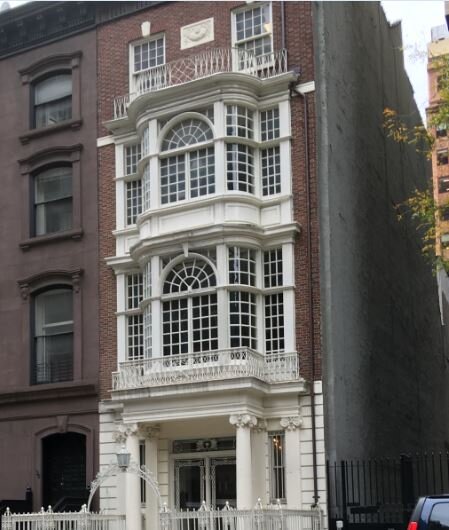The Understated Elegance of Murray Hill
Greeter Paula Thomson knows Murray Hill like the back of her hand. She has lived there since 1978, when she was blessed to find a rent-stabilized apartment – one in which occupants won't face high rent increases each year – the dream of every New Yorker.
Paula spoke about the area and its history. What we learned as we walked was both fascinating and fun.
Murray Hill is the area from 34th Street to 42nd Street and from Madison Avenue to the East River, on Manhattan’s east side. It is mainly a residential neighborhood.
The area was originally named “Inclenberg,” a Dutch term meaning “fire beacon on a hill.” In the 1750s, a wealthy Quaker shipping merchant and his wife, Robert and Mary Murray, built a 25-acre farm named Belmont. It was near the top of the hill – which was 20-40 feet -- at what is now Park Avenue between 36th and 37th Streets. After that, the area was forever called Murray Hill.
Former Carriage Houses for Horses at Sniffen Court
According to legend, Mary Murray was a heroine of the Revolutionary War. During the Battle of Manhattan, she invited the British commander General Sir William Howe and his men to enjoy a pot of tea and to rest at Belmont. This allowed the American soldiers to escape!
By 1847, residents became alarmed when industry began moving closer, so they drew up the “Murray Hill Restrictive Agreement.” This permitted only residential apartments and brownstones. The homes were designed to be village-like and not aggressive – to reveal as little as possible about the level of privilege.
The Morgan Library and Museum
Paula pointed out some of the 14 landmarked buildings: The Union League Club built in the 1930s for staunch Republicans, and the Morgan Library and Museum. J.P Morgan Senior, an American financier, had the first fully electric house, replacing gas, in New York City.
The Collector’s Club
We also saw the lovely Collector’s Club for stamp collectors. And we learned that Sniffen Court, on a tucked-away side street between Lexington and Third Avenues, was the former location of carriage houses for horses. Now they are beautiful residences.
Today, a certain cachet still defines Murray Hill. It is graceful and refined, but a show-off? Never.



